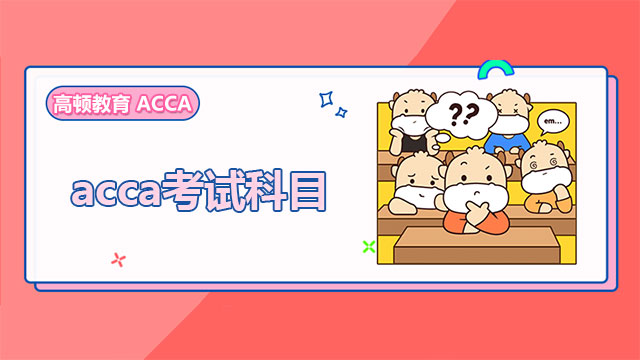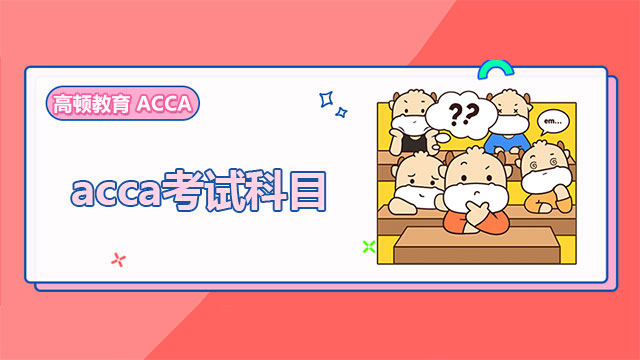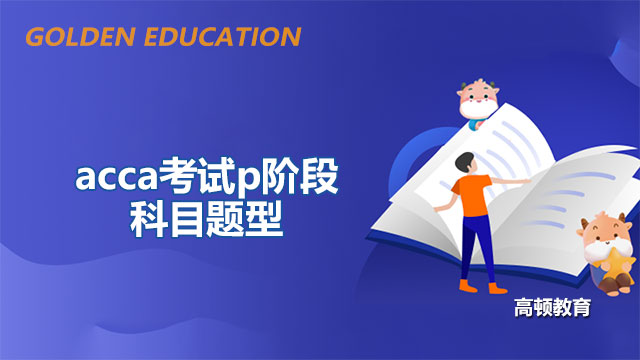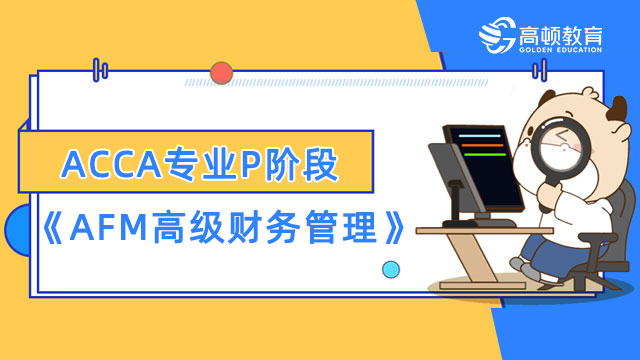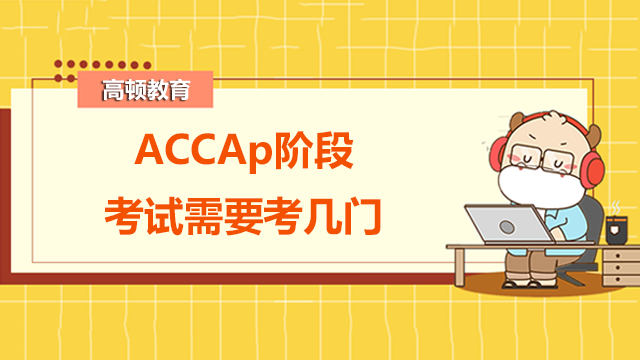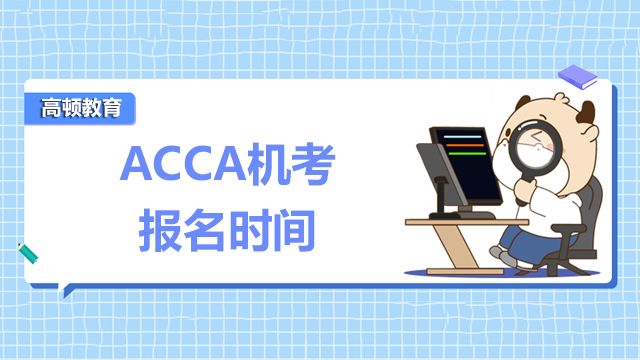2012年12月ACCA考试P1考试考官报告
来源:
高顿网校
2013-06-27
每次考试结束ACCA考官都会根据本次考试考生的总体表现情况写报告,具体分析学生在答题过程中出现的问题,总结学生在备考该科目时应该注意的事项,以下是2012年12月P1考官报告:
General Comments
The overall performance in December 2012 was similar to previous diets. There were some excellent scripts and many candidates had obviously worked hard and prepared thoroughly for the exam. As usual, I extend my congratulations to all successful candidates and their tutors. The remarks I make in this report are intended to help less successful and future candidates and I hope they are useful in that regard.As in the past, the structure of the P1 paper comprised one compulsory question in section A and a choice of two from three in section B. Question 1 was worth 50 marks overall and each section B question was worth 25 marks.
Before I go on to discuss the individual questions in detail, I am able to give a general overview of the questions that were done well and not so well in general. The parts of questions done well by many candidates were 1(a),1(c), 2(a), 2(b), 3(a), 3(b) and 4(a). The parts that were often done poorly were 1(b), both parts of 1(d) and also 4(b). I will discuss the reasons for the weaker performance in the question reports below.
Specific Comments
Question One
The case in section A (question 1) was about a company called P&J that made a product (X32) that was discovered to be toxic and hazardous to health. With so much investment in the X32 supply chain, P&J had to face several strategic problems, not least of which was a likely long-term liability from litigation claims from employees and others that had been exposed to X32. The requirements examined a range of issues concerned with P&J and its difficult situation. Part (a) asked about P&J’s social footprint. Most candidates were able to define what it means (the first requirement) and the question then asked for four particular social implications of Professor Kroll’s findings. The case described these and this showed the importance of carefully studying the case to gather this information. The emphasis here was on exploring how people and communities can be affected by business issues. In the case of X32, these issues concerned health, employment and the loss of company value. Part (b) asked about the diversification of risk. Overall, this requirement was done poorly. A minority was able to describe well what the term means. The requirement was to explain why diversification of its risks would be very difficult for P&J. Again, it was necessary to study the case in some detail to answer this well as all the reasons for the difficulties were there. Weaker answers attempted to fit the TARA framework into the answer although this was an inappropriate and incorrect approach. Part (c) was about the unethical and unprofessional behaviour of Hannah Yin, who was a qualified accountant and therefore subject to the fundamental principles of professionalism contained in the IFAC code of ethics. The case contained evidence that her behaviour breached three specific fundamental principles (integrity, objectivity and professional behaviour). Weak answers listed all of the IFAC principles with some attempting to show either their importance (which was not required) or to show how Hannah had somehow breached all of them. In understanding ethical behaviour for professionals, it is important to be able to criticise poor ethical behaviour and this was the main purpose of this question. I was disappointed that neither requirement in part (d) was done well by many candidates. The first part of (d) (i)was to distinguish between strategic and operational risk and this was done quite well by many candidates. It was the second requirement in (d) (i) that was done less well: to show how the findings in the Kroll report are a strategic risk to P&J. This involved being able to apply the idea of strategic risk and to analyse the case to show why these risks are strategic (as opposed to operational). This second requirement was less well done. It is important, then, not only to know what terms like ‘strategic risk’ mean, but also to be able to apply them in the context of information from a case study. I was surprised that part (d) (ii) was not so well done because five of the nine marks available were effectively testing theoretical knowledge (the board’s responsibilities for internal control). A thorough and systematic revision schedule should have provided candidates with a full knowledge of the board’s responsibilities in respect of internal controls and the COSO guidelines were a helpful framework around which to base a good answer. The second task in (d) (ii) was to criticise Mr Ho’s decision to choose Plan B. This was poorly done overall even although there were clear criticisms to be made of Plan B (in the case) from an ethical perspective: Plan B knowingly overlooked the health needs of some employees and acted based on how visible the changes would be, thereby ignoring the need to upgrade the facilities in the developing countries. The four professional marks were awarded for writing the answer in the form of an article in a magazine called Investors in Companies. There were some excellent attempts from some candidates whilst others seem to have made no attempt at all to frame their answers according to this requirement. As is previous reports, I would remind candidates, that making an attempt to gain the professional marks is very worthwhile and in some cases,can be the difference between a pass and a fail.
Question Two
The case in question 2 was about corporate governance in the country of Oland. All of the themes raised in the requirements had been on previous P1 papers (some on more than one) and so well-prepared candidates who had worked through the past papers would have seen similar requirements before.Part (a) appeared to be straightforward at first glance but the emphasis here was on how sound corporate governance can make it more difficult for companies to fail. This, after all, is one of the most important purposes of corporate governance (protecting the value of shareholders’ investment) and so the emphasis here was on showing how the measures in sound corporate governance make a company more robust and more able to cope with threats to its ongoing existence.Weaker answers listed the key underpinning concepts from study guide section A1d). It wasn’t clear how this
approach was attempting to answer the requirement about making it more difficult for companies to fail and so these answers were not well-rewarded. Good answers reflected upon the essential features of good governance and then, importantly, considered how each of these made a company more robust and less likely to get into financial difficulty.
Part (b) was quite well done overall. The distinction between rules and principles-based approaches to corporate governance was well understood by most candidates but the second task was less well done by some. In the case, Martin Mung had insisted that ‘comply or explain’ was ineffective, thereby arguing for a more rules-based approach in Oland. The task was to argue against his position, thereby arguing in favour of ‘comply or explain’. Some tagged this onto their discussion of the principles-based approach whilst others added it as a separate section after distinguishing between the two. Either was acceptable as long as the appropriate content was included in the answer.
Part (c) began by asking for an explanation of ‘accountability’, which most candidates could do successfully. The tasks asking about how shorter re-election periods and the provision of biographical detail might result in greater accountability were less well done by candidates. It was important to understand the link between accountability
as a concept and the mechanisms of calling to account (such as those described in the case). Again, the ability to apply a piece of knowledge (knowing what accountability means) to a case was key to gaining good marks.
Question Three
The case in question 3 was about Yaya Company and a number of failures of internal control, mainly centred around the quality control laboratory. Part (a), on the typical reasons why internal control systems might be ineffective, was done quite well overall, partly because it was mainly bookwork. On a P1 paper containing so much need to analyse the case and engage with higher level cognitive verbs, it is very important that bookwork marks are obtained where available. This underlines the importance of revising the main ‘lists’, themes and concepts in the study guide and in study texts.
Part (b) was a typical P1 question and one that has been asked, in various forms, several times before. The task was to look carefully at the case and explain (not just list) the internal control deficiencies that led to the problems at Yaya. Well-prepared candidates were able to gain good marks on this requirement with the best approach being to carefully pick out the IC failures, one at a time, with a separate paragraph dedicated to each.
Part (c) was done less well. Weaker answers used a mnemonic to list the qualities of useful information (typically the ‘ACCURATE’ mnemonic) but the question specifically asked how they would be of benefit to Mr Janoon. Those that just listed the general qualities did not score highly as they failed to engage with the value to Mr Janoon. A second task was to recommend specific measures that would improve information flow from the QC lab to the case. Many answers given were general or vague whereas a good answer considered the specific information needs of Mr Janoon and was framed in that way
Question Four
This was a ‘stakeholder’ question in which a disputed route for a new railway set the scene. Both routes (A and B) had their pros and cons and eventually, Route A was chosen which would protect Mr Krul’s farm but destroy the feeding ground for the colony of endangered birds.The Tucker ‘five question’ framework for assessing the decision to choose Route A (part A) was done well for the most part but some candidates merely listed the five questions with little attempt to engage with the case. The
point here was that whilst the decision to choose Route A was profitable and legal, there were questions over its fairness, its rightness and its sustainability. The better answers were able to engage with these issues and show that the selection of Route A was not without its complexities.
Part (b) was done poorly overall. A similar version of this question was on a previous paper so it was disappointing to see that many candidates performed poorly. A common, and incorrect, response was to frame the answer around the Mendelow matrix. Perhaps the word ‘stakeholder’ in the question triggered an assumption that the answer must involve the Mendelow matrix – but this was not so, except to highlight that some
stakeholders are more influential than others. The question specifically asked about the importance of recognising all of the stakeholders in a decision and therefore concerned stakeholders as sources of risk, disruption, conflict and reputation loss. A careful reading of the wording of the question was necessary to get the actual meaning of what was required.
Finally, part (c) asked about stakeholder ‘claims’ and then asked candidates to critically assess the claims of the three main stakeholders discussed in the case. I wrote a technical article about this in early 2008 and it was pleasing to see that most could explain the notion of a ‘claim’. The second task, to critically assess the three。
高顿网校特别提醒:已经报名2013年ACCA考试的考生可按照复习计划有效进行!另外,高顿网校2013年ACCA考试辅导高清课程已经开通,通过针对性地讲解、训练、答疑、模考,对学习过程进行全程跟踪、分析、指导,可以帮助考生全面提升备考效果。
报考指南: 2013年ACCA考试报考指南
考前冲刺:ACCA考试试题 考试辅导
高清网课:ACCA考试网络课程
版权声明:本条内容自发布之日起,有效期为一个月。凡本网站注明“来源高顿教育”或“来源高顿网校”或“来源高顿”的所有作品,均为本网站合法拥有版权的作品,未经本网站授权,任何媒体、网站、个人不得转载、链接、转帖或以其他方式使用。
经本网站合法授权的,应在授权范围内使用,且使用时必须注明“来源高顿教育”或“来源高顿网校”或“来源高顿”,并不得对作品中出现的“高顿”字样进行删减、替换等。违反上述声明者,本网站将依法追究其法律责任。
本网站的部分资料转载自互联网,均尽力标明作者和出处。本网站转载的目的在于传递更多信息,并不意味着赞同其观点或证实其描述,本网站不对其真实性负责。
如您认为本网站刊载作品涉及版权等问题,请与本网站联系(邮箱fawu@gaodun.com,电话:021-31587497),本网站核实确认后会尽快予以处理。
点一下领资料
【整理版】ACCA各科目历年真题
真题高频考点,刷题全靠这份资料
下载合集
acca全科学习思维导图
梳理核心考点,一图看懂全部章节
下载合集
2023年acca考纲解析
覆盖科目重难点,备考按照计划走
下载合集
acca备考 热门问题解答
- acca考试怎么搭配科目?
-
建议优先选择相关联的科目进行搭配报考,这样可以提高备考效率,减轻备考压力,1、F1-F4:为随时机考科目,难度较低,这里可以自行随意选择考试顺序。2、F5-F9:如果你的工作的和财务会计或者审计有关、或者你比较擅长财务和审计的话,推荐先考F7和F8。你可以选择一起考ACCA考试科目F7和F8或者先考F7(8)再考F8(7),这就要取决你一次想考几门。3、P阶段:选修科目中,建议企业首选AFM!第二部分科目进行选择,如果AA和SBR掌握学生更好,可以通过选择AAA,如果SBL掌握的好,可以自己选择APM。
- acca一共几门几年考完?
-
acca一共有15门考试科目,其中有必修科目和选修科目,考生需要考完13门科目才能拿下证书。
- acca一年考几次?
-
acca一年有4次考试,分别是3月、6月、9月和12月,分季机考科目是采取的这类四个考季的模式,而随时机考则是没有这方面的时间规定限制,可以随报随考。
- acca的含金量如何?
-
ACCA证书的含金量是比较高的,从就业、能力提升、全球认可等角度来说,都是比较有优势的证书,其含金量主要表现在以下几个方面:1、国际化,认可度高;2、岗位多,就业前景好;3、缺口大,人才激励。
严选名师 全流程服务
其他人还搜了
热门推荐
-
acca专业阶段考试科目有哪些?究竟都考些什么? 2023-04-23
-
accaP阶段科目考完需要多久?速戳了解! 2023-03-28
-
ACCA高级课程是哪几门?和基础课程比难度怎么样? 2023-03-17
-
sbr和sbl哪个难?accaP阶段先考哪个? 2023-03-16
-
accaP阶段报名费是多少?一文介绍全了! 2023-03-14
-
accaP阶段有哪些科目?各科目详细介绍! 2023-03-14
-
accap阶段考试顺序是怎样的?选修科目怎么选? 2023-03-10
-
acca考试科目:《ATX高级税务》重点详解! 2023-03-06
-
acca考试科目:《APM高级业绩管理》重点详解! 2023-03-06
-
acca考试科目:《AFM高级财务管理》重点详解! 2023-03-06
-
accap阶段有效期是多久?需要几年内考完? 2023-03-01
-
accaP阶段选修选哪两门?各科难度对比来了! 2023-02-28
-
2023年acca的sbl怎么学?点击查收备考攻略! 2023-02-24
-
acca考试p阶段科目题型,附各科分值参考! 2023-02-23
-
accap阶段要考几门?重难点是什么? 2023-02-10
-
accap阶段要考几门?重难点是什么? 2023-02-10
-
accaP阶段科目怎么搭配?先考哪门? 2023-02-09
-
ACCA专业P阶段:《AFM高级财务管理》复习攻略 2023-01-30
-
accap阶段选哪两门?考试重难点介绍! 2023-01-17
-
acca考试科目:《AAA高级审计与鉴证》题型及重点! 2023-01-17
-
acca专业阶段考试难度分析,选修科目报考指南来了! 2023-01-12
-
accap阶段报考顺序推荐,先报哪个好? 2022-12-15
-
ACCAp阶段一次最多考几门?成绩有效期是多久? 2022-08-24
-
ACCA的p阶段需要备考多久才够?考试难度怎么样? 2022-08-18
-
ACCAp阶段考试需要考几门?考试时间是哪天? 2022-08-15
-
ACCA考试P阶段考几门?P阶段成绩有效期是多久? 2022-08-12
-
ACCAP阶段科目难度高吗?P阶段是机考吗? 2022-08-10
-
ACCA最后四门难考吗?通过率怎么样? 2022-07-19
-
ACCA英语不好怎么办?怎么提高英语? 2022-07-14
-
ACCA机考报名时间是什么时候?怎么报考? 2022-07-14
 更多服务
更多服务

















